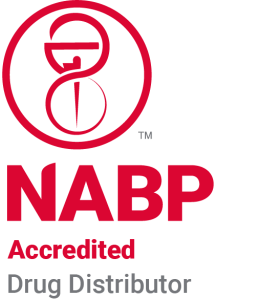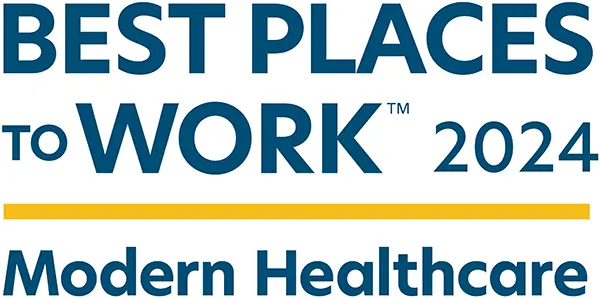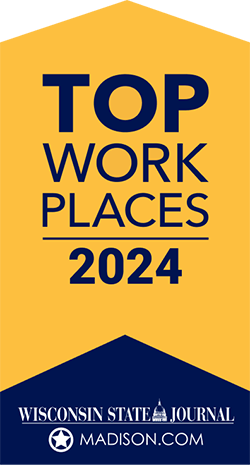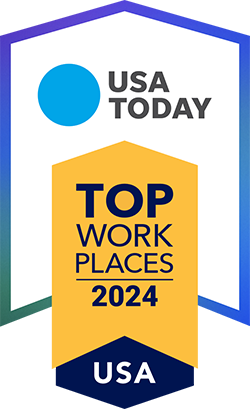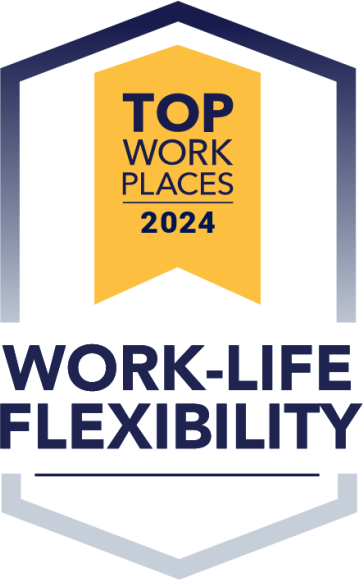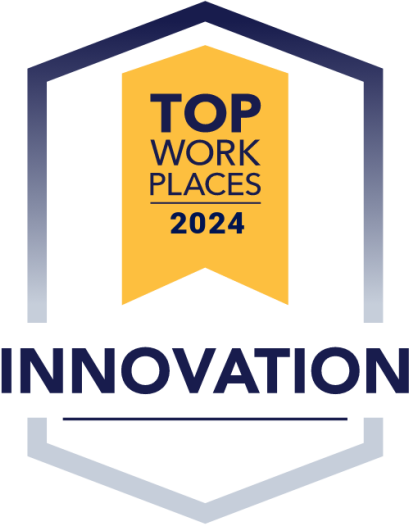In this discussion, Samantha Pomeroy and John Covello from Independent Pharmacy Cooperative (IPC) highlight the importance of the CMS National Average Drug Acquisition Cost (NADAC) survey for independent pharmacies. The survey, conducted by CMS’s vendor Myers and Stauffer, collects data on drug acquisition costs to ensure Medicaid reimbursements reflect true pharmacy expenses. Despite being voluntary, participation is critical. Currently, only about 500 of 4,000 surveys sent are returned, which risks skewing reimbursement rates. This data is confidential and used solely to create a fair, market-based reimbursement system. Future reforms may make reporting mandatory, which will improve the accuracy and transparency of these reimbursement rates. Pharmacies are urged to complete the survey thoroughly, as it directly impacts your financial sustainability and patient access to medications.
Resources:
National Average Drug Acquisition Cost: www.medicaid.gov/medicaid/nadac
Retail Price Survey: www.medicaid.gov/medicaid/prescription-drugs/retail-price-survey
Transcript
Samantha Pomeroy (00:05):
Hello everyone. Samantha Pomeroy here, director of Pharmacy Services and Specialty Programs at Independent Pharmacy Cooperative, and today I’m joined by my colleague John Covelo, senior director of Government Relations at IPC. And we want to take a quick minute to provide some guidance and information around the CMS NAAC survey that you might be selected to participate in. I personally have had several pharmacies lately reach out and ask if they should fill this out. Is this legitimate? What are they doing with this data? We have seen discussion in pharmacy association group chats, and so this was also a large topic at the American Pharmacist Association conference that I just attended and there were some great conversations around this. So thank you, John for joining me quickly. I know that you have been in DC all week working hard for independent pharmacies, so I appreciate your time today. You are the expert here, so can you please provide our members and independent pharmacies as a whole some guidance on this? So first, let’s start with what is this CMS Naac survey that independent pharmacies and all retail pharmacies are being chosen to participate in? Why is it important that our independent pharmacies and independent pharmacies as a whole participate in this and what information do they need to provide?
John Covello (01:28):
Sure. Well, Samantha, thank you for having me. I really appreciate the opportunity. I don’t think hopefully our members understand we do a lot working as collaborative teams in IPC to serve them and no, I really appreciate the close collaboration and partnership we do between us and government relations and the pharmacy services team to be there to fully service all our members needs. So thank you for that. I think the timing of this is great, Sam, because there’s obviously a big push in our PBM federal reform bill to make the use of really what’s a true cost-based, transparent and ultimately pass through reimbursement system for prescriptions in Medicaid and hopefully ultimately in Medicare in the commercial marketplace, reflective of what our members and what independent pharmacies as a whole are buying and purchasing the drugs at and the cost involved to provide the pharmacy prescription service access to patients.
(02:33):
So this really goes back really to the big advent of more new blockbuster drugs coming on the market 20 years ago, really more the government said, we had these benchmarks and you’ve worked in a store, I’m a policy person, not a pharmacy professional, but the idea of the alphabet soup or WAC A WP and all the discounting. And for many years the government had the viewpoint when we always had struggles that the fees were in Medicaid, maybe $2 or $3 in expensive states or maybe in some more rural based states, a dollar 75, that they weren’t really reflective of the growing cost and the view always was back, yes, but you’re making so much money on the way the drugs are priced that really doesn’t get to what it costs you. So they ended up in the long run fast forwarding after changes in the creation of a CA in 2010 to develop in CMS, this idea of naac of national acquisition, national acquisition drug cost, what the acronym stand for government always has initials to rather than making many things sound easy and it’s really simple, we’re going to go to a survey-based compilation from retailers and true retailers, not wholesalers, not mail houses, not closed shop pharmacies, true retail pharmacy access of what it costs them to have the drug in stock in order to serve that first Medicaid patient who comes through the door.
(04:24):
And that really came to fruition in 2017.
Samantha Pomeroy (04:28):
So
John Covello (04:28):
Since then, the way the program works is they’ve been doing representative sampling around the country of independent pharmacies of asking in a letter from, not directly from CMS, but from their vendor, Myers and staffer. And I know many of our member stores have a lot of experience with Myers and Stauffer from state programs around the country to basically be the contract agent to gather the data confidentially. I know that’s a concern a lot of members have rightfully so. I am not comfortable giving this information over to the government. Well, you’re giving it to a contractor and you should see every time you get surveyed disclosures on the confidentiality involved in that, that they are using it simply for data purposes and not to use it for any enforcement purposes. And in fact, they would’ve severe penalties if they ever disclosed your data to them, to anyone.
(05:32):
In fact, they’re technically not even supposed to disclose the raw data to CMS. So for all of you out there that are concerned, I don’t trust them having my personal store financial data on my acquisitions, you have recourse if that were ever to get disclosed. But the goal of all of this is let’s get a market basket. It really started from the idea of generic drugs. It was really to get to that, and you may have heard another government acronym, FUL Federal Upper Limit. It’s the idea of really creating what’s the maximum the government should be paying in the competitive marketplace of generics to ensure while the stores may get the benefits of marketplace shopping, the government should make sure it’s not paying more than that too. And I think the other thing, I guess, Sam, they may have touched on it at A PHA, it’s not an individual pricing program to make you feel, well, it’s really reflective of my to the penny invoice. It’s supposed to be representative as a market basket. And some drugs you may find are less than what you’re purchasing it at, but you may find others that are actually priced a little bit better on the drug acquisition.
(06:53):
And their view is it’s supposed to be a market basket that in the aggregate, you’ll hear them talk about this in the aggregate, it’s supposed to be reflective of your cost. Now, obviously that’s different from pharmacy to pharmacy, right? Sam, you may not buy every drug and stock every drug that’s on the price list, but it is national. Now, I don’t want to get too far in the weeds in this. Some states, because of the way they run their Medicaid programs, run their own survey. It’s called a c, actual acquisition cost. And they really do run those to make sure it’s complete and full that every pharmacy, every independent pharmacy in their state is filling it out because they feel they want to capture the marketplace of stores in their area, especially for more rural states. And a a C is actually better for preserving access and it’s more reflective of the lower volume and probably higher cost of acquisition through the supply chain for those more rural pharmacies in those more rural states. But to get back to naac, so what they do is they have a process. They don’t ask for surveys yet of every store.
(08:20):
It’s supposed to be a representative sample. And Sam, you may have more numbers on how many they’re doing now and what they reflected at A PHA,
Samantha Pomeroy (08:29):
They said that they’re sending out about 4,000 of these surveys and they’re really only getting maybe 500 back. And they also mentioned that chains have started reporting the solution there was to really, they send out the survey monthly and they now are really taking a three month average of those numbers as well. So that’s why we’ve heard so much about it recently, and we all sometimes think that independent pharmacies aware that they need to do this and why they need to do this, but hearing those numbers was alarming that they’re sending out over 4,000 and they might get 500 back.
John Covello (09:12):
I think the lesson, I want everybody to walk away from this short webinar to understand not participating can hurt you in the long run. Please feel confident. Reach out to us, reach out to NCPA, reach out to your state association. If you have more specific questions about this, everybody will guide through it, but the less data they have, the less representative you will find it to your particular situation when they do these surveys. My understanding, Sam, is they try to get representative requests around the country,
(09:52):
And it’s like you said, it’s rolling. They do this as a random sampling. My understanding, unless you’re in a state doing an A C, you could go a couple of years or longer without seeing your store being surveyed. So it’s not like you’re going to get one every 90 days. It’s not like you’re necessarily going to get one every year. And the other thing I’ve seen the templates, but I’ve never done the surveys, is evidence-based. So understands that means they’re asking for your invoices for that two week timeframe or whatever timeframe they give you if it’s for the month of all your purchasing because they don’t know what you’re purchasing for a Medicaid patient. But their responsibility under the law is they have to pay you enough to cover your costs. If you only get one Medicaid patient walking in for the first time, that in that timeframe that they paid you enough for the cost of that drug and understand these naac prices. The formula, the way the payment works is only in fee for service. So if you’re in a fully carved out fee for service state, it’s working to your advantage. The participation in the surveys though, under the current law is voluntary.
(11:13):
And I’m sure some of you, and they are supposed to throw out outliers, ones that come in way too high and ones that really are outside. I’m not a statistician, but what’s statistically valid if it’s really far outside the normal mean of what they’re seeing. So they really are designing this to be work to the advantage of the program, but to the pharmacy provider that they are paying them in approximation to the estimated acquisition cost.
Samantha Pomeroy (11:44):
Okay?
John Covello (11:46):
And you’re hearing more obviously with our advocacy and that’s where I spend time in Washington. One of our big federal PBM reforms is to get to mandatory naac reporting, but it will really be so that everybody will be able to report. And even with these, I think there’s systems where they can set it up where your wholesaler will be able to do them. We understand the time crunch you’re under, and you do have to provide the invoices with it to provide the documentation of the validity. The other thing I want to just touch on, Sam, that’s very important. It’s your cost at purchase. It’s your cost of what gets reflected at point of sale. I hear stories, well, I don’t want to fill these out because my rebate agreements, I don’t feel that’s something that necessarily I can have and be able to give them or when I have them, it’s long after I’ve done the purchase. I don’t think that I should disclose that. Understand the way they did it, they expressly, and this was a lot of advocacy, RN did not include any discounts, any rebates, any concessions you get that can’t be captured at point of purchase. They really want this to be true acquisition at time of acquisition for you to have the drug in place to preserve the beneficiary access rights. That’s their legal requirement
Samantha Pomeroy (13:17):
That
John Covello (13:17):
Actually works better to our community of providers that it’s what does it cost you on cashflow to purchase that drug to have it in stock that day?
Samantha Pomeroy (13:30):
Okay.
John Covello (13:31):
There
Samantha Pomeroy (13:31):
Are
John Covello (13:32):
Resources,
Samantha Pomeroy (13:32):
John, real quick though, for those that you mentioned, the reform and you’re working for it to be mandatory, for those that are concerned about this because then retail chains would have to report, right? What is the goal there with the data that they’re seeing if chains and independent pharmacies are reporting?
John Covello (13:53):
So the goal is to get rather than statistically valid surveying based, and this is the challenge, Sam, if anybody walks away with any message of this, you only serve yourself better by seeing better pricing. If you get the survey, it can work against you if you ignore or throw out the survey or view your suspicious. So I implore everybody, you get one of these surveys, you only get it once every two years. Please fill it out completely. Please provide all the documentation verification. If you don’t provide everything in the evidence of your invoice, they’ll throw that information out. So it’s like anything else in a science basis or a formula base.
(14:42):
It could be garbage and garbage out. If they don’t get enough data, you may not find it there. But our long-term goal is everybody would have a requirement and there will be penalties if it’s not submitted to get everyone’s acquisition data. So every NDC will have a reference-based price. That’s even true for new launches where right now it’s very difficult in this survey base for biologic SAM or new drug launches, or even for the first conversion of a generic where it’s come up patent agreement and the first generic hits the marketplace, there’s a little bit of a lag with them developing the first NA act because they don’t know if they’re always going to get that on this random sampling. If they have everybody’s data, they will have every NDCs acquisition costs. But to your point, their requirements in the law when they created the naac was back to that standard actual acquisition cost at the point of sale for ingredient cost reimbursement to preserve access. I think we will see that they will have evidence to show or identify if they see statistically significant variables between chains and independence,
Samantha Pomeroy (16:09):
Independence. That’s the hope,
John Covello (16:12):
And that’s an issue that will be in the details on the implementation to really help
(16:18):
Make sure they’re preserving the access. But we’ll get resources of medicaid.gov/medicaid/naac that we’ll have out there if you want to learn more about it. And there’s the whole history if you want to look at them. This is public transparent data of how they developed these, if anyone’s so inclined to look at it to get a better understanding. But I know all groups in our industry, all buying groups, all national trade groups for independent pharmacies and the profession obviously of A PHA are really imploring everybody and have research to explain. This is where we want to get the basics to pay you enough to acquire that drug where the payment on the reimbursement size matches acquisition. So there is a recognition they have to preserve access for you to continue to serve your patients.
Samantha Pomeroy (17:22):
Okay, John, thank you as always for your advocacy work for all of independent pharmacy and really keeping us up to date on the things that matter most, and we’ll really push our industry forward. If you have any questions about naac, the surveys or anything else, please reach out to us on our website@ipcrx.com. We would love to engage with you. And also please like and share this video so that we can make all independent pharmacies that are receiving this survey aware that they do need to participate. So thank you for your time today. Thanks,
John Covello (17:57):
John. Anytime. Thank you.
